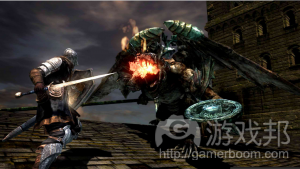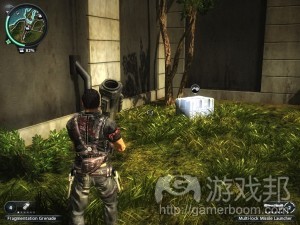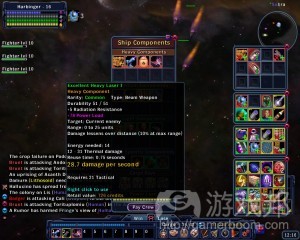解析由玩家控制升级情况的优势与劣势
作者:Josh Bycer
我曾经在探讨游戏设计中的进展时,把它分成短期的和长期的:所谓短期的就是,小的或立即的改变如更换新装备;而长期的,就是会影响玩家随后的游戏操作方式的大改变,如《暗黑3》中的解锁符文。
但是,根据玩家对游戏进展的控制程度,我们可以进一步分析。由玩家控制的升级具有如下优势和劣势:
预制升级
在许多带有RPG元素的游戏中,玩家可以控制角色的成长,包括学习什么技能或解锁更新的顺序等。
基本上,在任何给定的时候,玩家都很清楚接下来要解锁什么以及如何解锁。甚至在物品随机掉落的RPG如《暗黑3》或《丁神的诅咒》中,绝大部分玩家的能力都取决于他们已经可以使用的技能,而这些技能又受制于等级。
在一段时间内给玩家新玩东西玩,这是游戏刺激玩家不断玩下去的普遍机制。在玩MMO或RPG时,谁会无聊到每一次打完怪就盯着经验条看长了多少呢?
在强调升级的开放世界的游戏中,的谓的“一段时间”是相对的,还要看玩家获得所需元素的速度有多快。但玩家仍然知道自己只要再杀N个敌人或收集到某某物品就可以变得更强。
(在《黑暗之魂》中,所有装备都被平衡过了,玩家可以自由设置自己的武器和进攻方式。)
让玩家控制升级的优势在于,玩家可以培养出更加贴近自己的角色。因为角色的成长是由玩家控制的。
正如前面提到的,预制目标或任务列表可以更容易刺激玩家继续游戏,而不是告诉玩家他们在游戏时“可能”找到什么有用的东西。
从设计的角度来看,确切地知道玩家在游戏过程中可以执行的升级路径和选择,有助于平衡游戏。例如,如果你知道到第一场BOSS战时,玩家只可能在命值上有所增长,那么你就不会让那场战斗对玩家提出更多升级要求。
许多设计师不会费力折腾升级系统的细节,而是根据松散的游戏风格来平衡游戏:有些玩游戏的人并不追求各种进展。努力升级的人虽然会得到奖励,但不升级的人并不会受到惩罚。
虽然设计升级系统有助于观察升级情况,但存在几个问题。玩家要完成所有升级,意味着玩家要执行特定的行为,并且行动上受限。也就是,任何与进度无关的活动都是浪费时间。
例如,如果玩家变得更强的唯一办法就是杀死10只红怪,那么花两个小时打蓝怪就是浪费时间。
更糟的是,游戏要求玩家开始Y进程以前必须先完成X进程。结果是,玩家很可能会同时执行X进程和Y进程,但只有X进程是有效的。在《Red Dead Revolution》中,这真是太打击人了,因为游戏的支线任务要求玩家按顺序杀死特定的动物。
(甚至完全开放世界的游戏如《正当防卫2》也设置了某种形式的升级系统。但这限制了角色的提升。)
预制升级的另一个问题从它的叫法中就可以看出来:玩家的成长方式也是固定的。一旦玩家达到最高级,或升完所有级,也就不存在其他看得到意义的进步了。
在《暗黑3》中,角色升级和能力大多以解锁新技能和符文为基础,而不是装备。解锁掉最后一个符文后,玩家就看不到进展了,除了随机升级。预制升级还意味着游戏线性化,导致重复游戏变得更加无趣。
当玩家在游戏中没有期待了或预制目标太遥远了,大多数玩家会觉得这就是该向游戏告别的时候了。也正是在这个时候,游戏需要随机升级了。
随机升级:
让玩家知道什么时候以及如何升级是刺激玩家继续游戏的好办法,但随机升级也能达到好效果。
正如我们前面所提到的,随机升级能和预制升级共存。但接下来我们要谈的是,如何利用随机升级作为主要的进程手段。
不算《暗黑3》,大多数RPG给玩家提供各种随机装备来培养自己的角色。装备可以显著地影响玩家之后的游戏操作方式。如给战士“生命窃取”能力,或使用冰系武器冷冻敌人。
(《银河特工》中有许多随机装备,玩家可以根据装备的东西改变自己的操作风格。)
虽然《边境之地2》确实通过种族技能的形式体现了预制升级,但这款游戏的进程的主要形式仍是,用五花八门的能力寻找新枪。改变枪可以严重影响玩家的操作风格:如从突击步枪切换到散弹枪。
你永远不会知道新物品什么时候出现,这就像知道再升一级需要多少经验一样有吸引力。借助随机升级,游戏的重玩价值增加了,因为玩家能变得多强是不受限制的。
从设计上说,与预制升级的游戏相比,以随机升级为中心的游戏更加开放,无论是在升级方面还是一般的通关方面。在随机升级游戏中,玩家可使用的武器丰富,战术灵活,因为游戏的敌人和场景是非常多的。
如果修改器和装备变化足够丰富,再加上一定的数值调整,这款游戏就可以玩非常久了,当然,这是在不考虑装备品质和难度曲线的相应上升的前提下。
但随机升级还是面临几个大问题。首先,当所有物品都是随机的,玩家就很难自定义培养角色了。当你喜欢使用一种特定的武器或操作风格时,却因为只找到另一种升级物品而被迫按那种风格玩游戏的话,你会觉得非常沮丧。
虽然使用随机升级因为未知性而充满吸引力,但也意味着你无法知道你是否得到任何升级。装备升级必定是短期的,因为随着游戏,玩家总是想得到更好的装备。但如果玩家在几个小时内都只能使用相同的装备,那就会出问题了。
另一个问题是,在游戏过程中如果能力曲线增长得太慢。在这种情况下,玩家会发现大量副升级,而不是角色的主升级。在玩《火炬之光》系列时,我就遇到这个问题,每一次战斗开始后,我总是要停下来看看看装备的微小变化。
最后一个大问题是,游戏很难达到平衡,因为设计师不知道玩家在任意时候的一般能力水平。例如在《暗黑3》中,最初的炼狱模式难度太大了,因为设置不符合玩家当时可以使用的装备范围。
在《边境之地2》中,玩家可能遇到使用某种武器或伤害类型会更容易通关的情况,但玩家可能还没找到对应当前危险等级的武器。
(许多动作游戏具有RPG元素,但如果平衡得不好,很可能导致混乱。)
更糟的一种情况是,如果游戏中的战斗或情形是预制的,装备却是随机的。结果通常是,要么战斗变得太简单,因为玩家找到更强大的武器;要么玩家在战斗中屡屡受挫,因为升级不够。
综观两种升级,不能说哪一种更好。二者都可能使游戏变得更好。确定使用哪一种升级是很关键的,这会影响游戏设计的方方面面。最好能专注于其中一种,或在早期就把二者相结合并坚持到底。
确定升级的所有部分就好像给大楼打地基:如果大楼已经开始建了,你却突然改变地基,那么大楼必然轰然倒塌。(本文为游戏邦/gamerboom.com编译,拒绝任何不保留版权的转载,如需转载请联系:游戏邦)
Player Controlled Progression
by Josh Bycer
In the past I’ve talked about progression in game design by defining it as short-term and long-term. Where short-term represented minor or constant changes like new equipment. And long-term were major changes that affected how the player continues to play such as runes in Diablo 3.
However we can further break down progression based on the amount of control the player has over it and as always, there are specific advantages and disadvantages to consider.
Foundation Building:
In many games with RPG elements these days, the player is given control of how their character is developed. This could mean everything from what skills to have active at one time, or in what order upgrades become unlocked.
Basically the player knows at any given time a good idea of what they’re going to unlock next and how to get it. Even in a RPG with randomized loot like Diablo 3 or Din’s Curse, the majority of the player’s abilities are based on what skills they have access to, with said skills based on leveling up.
Giving the player a time-frame for when they are given new toys to play with is a popular motivation mechanic to keep people playing a game. Who here while playing a MMO or RPG has ever stared at their experience bar after a fight to see how much of it filled up?
With open world games built around upgrades, the time-frame is relative, based on how quick the player pursues the required elements. But the player still knows that they can become stronger if they kill X enemies or gather Y items.
All equipment in Dark Souls was set and finely balanced, allowing players to personalize their gear and attack style.
The advantage of giving the player control of the progression is that it can make the character become personal to the player. As the player is in control of how their character develops.
As mentioned, it is easier to motivate players with set goals or a check-list, as opposed to telling them that they “may” find something useful while playing.
From a design point of view, knowing exactly the upgrade paths and choices the player can make over the course of playing, makes it easier to balance the game out. For example: If you know that by the first boss fight that it is only possible to acquire more health, then you don’t want to make that fight require additional upgrades.
Many designers don’t sweat the details with an upgrade system and instead balance the game around a loose play-style: someone who plays the game and not focusing on getting every upgrade. That way the people who do try to get them all will notice that the upgrades paid off without punishing those that didn’t.
While having set upgrades makes it easier to view progress, there are several issues to be aware of. By having a completely rigid list of upgrades for the player to find, means that there are specific actions and limits to what the player can accomplish. Meaning that anything not relating to progression can be seen as wasted time.
If the only way for the player to become stronger is to kill 10 red enemies, then spending the next two hours fighting nothing but blue enemies will seem like a waste.
What’s worse is if you have tiered progression that requires the player to complete X before Y begins to count.
What ends up happening is that the player will likely perform both X and Y actions at the same time, but only the X actions will count. This was frustratingly seen in Red Dead Revolution with the hunting side quests that required you to kill specific animal types in a set order.
Even completely open world titles like Just Cause 2 featured set progression in the form of upgrade crates. But this created a limit on character improvement.
The other problem with set progression is right in the name: there is a set number of ways for the player to improve. Once the player has reached max level, or found all the upgrades, there are no other ways to show meaningful improvement.
In Diablo 3, so much of the character progression and abilities were based on unlocking new skills and runes in contrast to equipment. After the player unlocked the last rune, progression grinds to a halt with the only area of progression left are random upgrades. There was also the fact that set upgrades also meant a linear path through the game, making repeat plays less interesting.
When there is nothing more to look forward to or the goal post is placed too far away, most people will see this as the time to stop playing. This is where providing variable upgrades comes in.
Rolling the Dice:
Knowing when and how upgrades will happen can provide steady motivation for playing, but random upgrades can be a good surprise.
As we mentioned up above, randomized upgrades can co-exist with set upgrades, but for this category we’re going to talk about games where they are the primary means of improvement.
Not counting Diablo 3, most ARPGs give the player a wide variety of randomized equipment to build their characters from. This equipment can have a noticeable affect on the player’s play style from that point on. Such as giving a warrior life steal, or creating a build around using ice weapons to freeze enemies.
Drox Operative featured a variety of randomized equipment designed to alter your play style based on what you have equipped.
While Borderlands 2 did feature set upgrades in the form of skills for each class, the main form of progression came from finding new guns with wildly varying differences in abilities. Changing guns could have a huge impact on your style of play: such as switching from an assault rifle to a shotgun.
The fact that you never know when a new item will appear can be as motivating (if not more so) as knowing how much experience you need for the next level. With randomized progression, there is a lot more replay ability as you know that there isn’t a set limit for how powerful you could become.
In terms of design, games built around randomized progression are more open compared to set progression, both in terms of upgrades and the general path through the game. The player is usually given a wide variety of weapons and possible strategies, as the game has just as many different enemies and situations.
If the game has enough variety in terms of modifiers and different equipment, with enough stat tweaking you could have a game that goes on for a very long time. If not infinitely with a consistently rising curve of equipment quality and danger.
However it’s time to talk about the problems and there are several big issues that can happen. First is that it’s hard to personalize a character when everything that makes up their utility is random. If you like using one specific weapon or style, it can be disheartening to be forced to use something else on account of only finding upgrades of a different type.
While having random upgrades can be motivating by the fact that you never know, it also means that you have no idea if you’ll get any upgrades. Equipment upgrades are meant to be short-term as you want to be consistently getting better gear the more you play. But if you’re going upwards of several hours using the same equipment, then there is a problem.
Another problem is if the power curve increases too slowly over the course of playing. In this case the player will find a lot of side-grades, but not a lot in terms of major upgrades to their character. I had this issue with the Torchlight series, as I had to keep stopping and starting after each fight to check the minute differences between equipment.
Finally the big issue is that game balance can be very tricky to pull off when the designer has no idea what the general power level of the player is at anytime. As with Diablo 3, the designers went overboard with the initial inferno mode settings and they weren’t balanced around the relative range of equipment stats that were available to the player.
Or in Borderlands 2′s case: you may come to a section that was easier with a specific weapon or damage type, but you may have not found the specific type relative to the current threat level.
Many action titles these days feature RPG mechanics but when not balanced properly, can lead to frustration.
What’s worse is if the game features set battles or situations, but with randomized equipment. What usually ends up happening is that either the fight will be so easy because the player found stronger equipment, or it will be frustratingly difficult due to lack of upgrades.
Examining both sides of progression there isn’t a clear-cut winner. Both types of progression can be used to make an amazing game. Deciding what kind of progression you are going to use is a pivotal decision and one that will affect everything about the design of your game from that point on. It’s better to fully commit to either one or the other, or a combination of both early on and stay the course.
Defining all areas of progression in a title is like building the foundation of a house: if you alter it once the building begins to go up, the whole thing could come crashing down.(source:gamasutra)
下一篇:开发者通过免费游戏盈利的5大建议












































 闽公网安备35020302001549号
闽公网安备35020302001549号